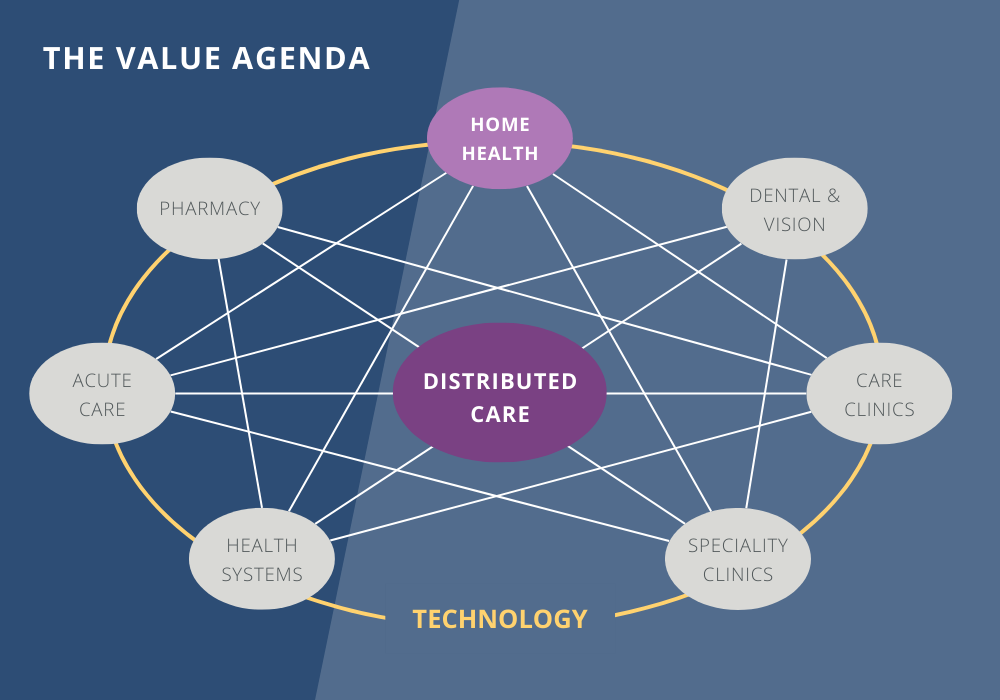11/16/2022
The Value Agenda advocates for the shift from volume-driven goals to patient outcome-driven measures of success in healthcare. With consumers now in the driver’s seat, providers are looking for ways to satisfy patients while also caring for their employees. Enabling home health care is one of the popular places for providers to start. However, home-based health paired with distributed care is the optimal combination to achieve satisfied customers and foster a mentally healthy and loyal workforce.
Home Health Care
Home-based primary care—or the modern-day “house call”—delivers primary care to the most medically complex and homebound or home-limited patients. Traditionally, these patients have represented the most costly segment of the healthcare system.
The ability to deliver care directly to the patient’s bedside brings an element of compassion and respect to the caregivers while offering comfort, ease, and peace of mind to the family. To patients, it is a no-brainer—it is much preferred to have the option to dial home health providers rather than 911 in a time of need. Let’s take a look at other benefits of home health:
- Reduces medical emergencies, fragmented care, and missed appointments through consistent in-home care
- Improves control of chronic conditions
- Alleviates stress of patients and caretakers
- Enables accountable care organizations (ACOs) and other programs to improve the coordination and quality of patient care (e.g. reducing expensive nursing home services while boosting patient satisfaction)
- Increases quality of measured areas (e.g. medication reconciliation, documentation, and follow-up)
- Increases provider engagement and satisfaction
To optimize customer value, providers can’t stop at home health care alone. While convenience and comfort are valuable, there are still limitations related to access, cost, and nursing staff shortages. Additionally, we know that the need for hospitals, specialty clinics, and other treatment centers will never be obsolete.
With a comprehensive view of customer care in mind, providers must consider offering a unified or integrated care experience by pairing home health with distributed care capabilities. For example, a recipient of home-based care might be someone who had surgery in a hospital but required post-op therapy, injections, or monitoring. The transition from the hospital to the comfort of the patient’s home requires coordination and strong communication; none of which would be available without distributed care networks.



